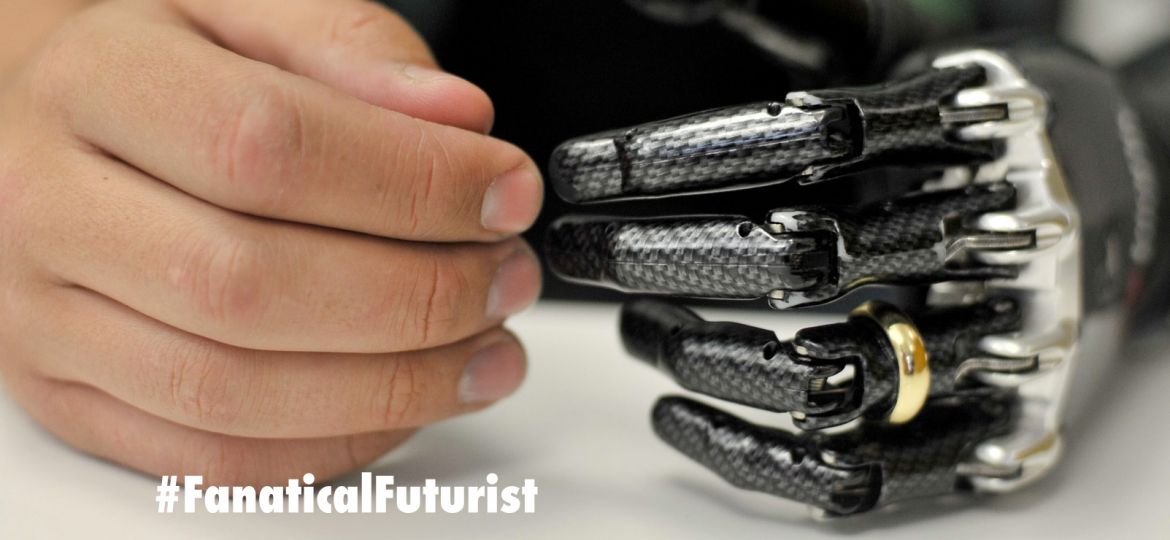
WHY THIS MATTERS IN BRIEF
When people loose a limb the prosthetics they use don’t offer any form of tactile or sensory feedback, this new project hopes to solve that problem and give people their sense of touch back via a new form of prosthetic.
Following on from a similar project in the UK to help amputees regain their sense of touch using a new form of prosthetic, now the world’s first bioengineered hand that can actually let its user feel as though they’re using their own human hand, and not a robotic hand, is now being developed by a team of scientists from Florida Atlantic University (FAU) and the University of Utah, and the multi-disciplinary team, who’ve just received over $1.3 million in funding, have taken on the task of revolutionising future prosthetics.
Prosthetics have improved in giant leaps and bounds in the last decade, from being weighty and clunky additions that often slowed rather than assisted to their user, to robot hands that can be controlled with just a thought, but despite all these advances even the most advanced prosthetics can be difficult for the user to get used to and control because of the lack of feeling. Without a tactile experience of closing a hand around an object users are generally left relying on little more than visual cues.
At the moment the team is developing a method of linking the robot’s tactile touch sensations to the user’s brain, a development that includes research into how brain neurons and human behaviour are linked, the outcome of which will help the scientists start to create a prosthetic that allows its user to feel touch.
The scientists already have a big boost in their project by being able to work with a record-breaking robotic hand developed by the FAU that can already do a lot more than the average prosthetic and that has the ability to understand pressure changes, like this other “spongy” robot hand, and can interpret information from different materials and objects it interacts with. Like a human hand, the robot hand has many sensory receptors that help it adjust its grip according to the weight and texture of objects.
The new project aims to take this robot hand’s ability to pick up this information and figure out a way to send it to the user’s brain to be received in the same way we do with our regular skin, but first the scientists will need to understand how to replace and stimulate the neural pathways in a person’s body who has had their extremities damaged or lost through trauma.
“When the peripheral nerve is cut or damaged, it uses the rich electrical activity that tactile receptors create to restore itself. We want to examine how the fingertip sensors can help damaged or severed nerves regenerate. To accomplish this, we are going to directly connect these living nerves in vitro and then electrically stimulate them on a daily basis with sensors from the robotic hand to see how the nerves grow and regenerate while the hand is operated by limb-absent people,” says Erik Engeberg, Ph.D., an associate professor at FAU.
The team has funding for the next four years and the final research will not only benefit patients who have lost limbs, but also potentially help those who have suffered a loss of functionality from paralysis, something that is now itself being reversed with new technologies, and strokes.
















